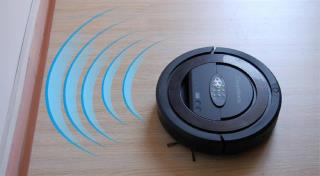Si të instaloni Thelia 2.3 në Debian 9
Përdorimi i një sistemi të ndryshëm? Thelia është një mjet me burim të hapur për krijimin e faqeve të internetit të e-biznesit dhe menaxhimin e përmbajtjes në internet të shkruar në PHP. Kodi burimor Thelia i
Omeka Classic 2.4 CMS is a free and open source digital publishing platform and Content Management System (CMS) for sharing digital collections and creating media-rich online exhibits. Omeka Classic 2.4 CMS enables scholars, librarians, archivists, museum professionals and cultural enthusiasts to create complex narratives and share rich collections and content at low cost without sacrificing design and technical quality. Omeka accepts and stores all types of files, including images, video, audio, multi-page documents, PDFs, Power Point presentations; and can handle large archives of metadata and files (with over 1 million items) with the only limitations being the power of your server.
In this tutorial we are going to install Omeka Classic 2.4 CMS on a Debian 9 LAMP VPS using Apache web server, PHP 7.1, and a MariaDB database.
We will start by adding a new sudo user.
First, log into your server as root:
ssh root@YOUR_VULTR_IP_ADDRESS
The sudo command isn't installed by default in the Vultr Debain 9 server instance, so we will first install sudo:
apt-get -y install sudo
Now add a new user called user1 (or your preferred username):
adduser user1
When prompted, enter a secure and memorable password. You will also be prompted for your "Full Name" and some other details, but you can simply leave them blank by pressing Enter.
Now check the /etc/sudoers file to make sure that the sudoers group is enabled:
visudo
Look for a section like this:
%sudo ALL=(ALL:ALL) ALL
This line tells us that users who are members of the sudo group can use the sudo command to gain root privileges. It will be uncommented by default so you can simply exit the file.
Next we need to add user1 to the sudo group:
usermod -aG sudo user1
We can verify the user1 group membership and check that the usermod command worked with the groups command:
groups user1
Now use the su command to switch to the new sudo user user1 account:
su - user1
The command prompt will update to indicate that you are now logged into the user1 account. You can verify this with the whoami command:
whoami
Now restart the sshd service so that you can login via ssh with the new non-root sudo user account you have just created:
sudo systemctl restart sshd
Exit the user1 account:
exit
Exit the root account (which will disconnect your ssh session):
exit
You can now ssh into the server instance from your local host using the new non-root sudo user user1 account:
ssh user1@YOUR_VULTR_IP_ADDRESS
If you want to execute sudo without having to type a password every time, then open the /etc/sudoers file again, using visudo:
sudo visudo
Edit the section for the sudo group so that it looks like this:
%sudo ALL=(ALL) NOPASSWD: ALL
Please note: Disabling the password requirement for the sudo user is not a recommended practice, but it is included here as it can make server configuration much more convenient and less frustrating, especially during longer systems administration sessions. If you are concerned about the security implications, you can always revert the configuration change to the original after you finish your administration tasks.
Whenever you want to log into the root user account from within the sudo user account, you can use one of the following commands:
sudo -i
sudo su -
You can exit the root account and return back to your sudo user account any time by simply typing the following:
exit
Before installing any packages on the Debian server instance, we will first update the system.
Make sure you are logged in to the server using a non-root sudo user and run the following commands:
sudo apt-get update
sudo apt-get -y upgrade
Install the Apache web server:
sudo apt-get -y install apache2
Then use the systemctl command to start and enable Apache to execute automatically at boot time:
sudo systemctl enable apache2
sudo systemctl start apache2
Check your Apache default site configuration file to ensure that the DocumentRoot directive points to the correct directory:
sudo vi /etc/apache2/sites-enabled/000-default.conf
The DocumentRoot configuration option will look like this:
DocumentRoot "/var/www/html"
We now need to enable the mod_rewrite Apache module, so ensure that your Apache default site configuration file is still open, and add the following Directory Apache directives just before the closing </VirtualHost> tag, so that the end of your configuration file looks like this:
<Directory /var/www/html/>
Options Indexes FollowSymLinks MultiViews
AllowOverride All
Order allow,deny
allow from all
</Directory>
</VirtualHost>
The most important directive shown above is AllowOverride All.
Now save and exit the file, and enable the mod_rewrite Apache module:
sudo a2enmod rewrite
We will restart Apache at the end of this tutorial, but restarting Apache regularly during installation and configuration is certainly a good habit, so let's do it now:
sudo systemctl restart apache2
We can now install PHP 7.0 along with all of the necessary PHP modules required by Omeka Classic CMS:
sudo apt-get -y install php php-gd php-mbstring php-common php-mysql php-imagick php-xml libapache2-mod-php php-curl php-tidy php-zip
Debian 9 defaults to using MariaDB database server, which is an enhanced, fully open source, community developed, drop-in replacement for MySQL server.
Install MariaDB database server:
sudo apt-get -y install mariadb-server
Start and enable MariaDB server to execute automatically at boot time:
sudo systemctl enable mariadb
sudo systemctl start mariadb
Secure your MariaDB server installation:
sudo mysql_secure_installation
The root password will be blank, so simply hit enter when prompted for the root password.
When prompted to create a MariaDB/MySQL root user, select "Y" (for yes) and then enter a secure root password. Simply answer "Y" to all of the other yes/no questions as the default suggestions are the most secure options.
Log into the MariaDB shell as the MariaDB root user by running the following command:
sudo mariadb -u root -p
To access the MariaDB command prompt, simply enter the MariaDB root password when prompted.
Run the following queries to create a MariaDB database and database user for Omeka Classic CMS:
CREATE DATABASE omeka_db CHARACTER SET utf8 COLLATE utf8_general_ci;
CREATE USER 'omeka_user'@'localhost' IDENTIFIED BY 'UltraSecurePassword';
GRANT ALL PRIVILEGES ON omeka_db.* TO 'omeka_user'@'localhost';
FLUSH PRIVILEGES;
EXIT;
You can replace the database name omeka_db and username omeka_user with something more to your liking, if you prefer. Also, make sure that you replace "UltraSecurePassword" with an actually secure password.
Change your current working directory to the default web directory:
cd /var/www/html/
If you get an error message saying something like 'No such file or directory' then try the following command:
cd /var/www/ ; sudo mkdir html ; cd html
Your current working directory will now be: /var/www/html/. You can check this with the pwd (print working directory) command:
pwd
Now use wget to download the Omeka Classic CMS installation package:
sudo wget https://github.com/omeka/Omeka/releases/download/v2.5.1/omeka-2.5.1.zip
Please note: You should definitely check for the most recent version by visiting the Omeka Classic CMS download page.
List the current directory to check that you have successfully downloaded the file:
ls -la
Remove index.html:
sudo rm index.html
Let's quickly install unzip so we can unzip the file:
sudo apt-get -y install unzip
Now uncompress the zip archive:
sudo unzip omeka-2.5.1.zip
Move all of the installation files to the web root directory:
sudo mv omeka-2.5.1/* /var/www/html
Change ownership of the web files to avoid any permissions problems:
sudo chown -R www-data:www-data * ./
Restart Apache again:
sudo systemctl restart apache2
Now we're ready to move on to the final step.
Omeka Classic CMS requires ImageMagick to process images so let's make sure that it is installed:
sudo apt-get -y install imagemagick
To complete the Omeka Classic CMS installation, we first need to edit the Omeka Classic CMS database configuration file, so first make sure you are in the webroot and then open the db.ini file:
sudo vi ./db.ini
Replace the XXXXXXX values with your database configuration details, as follows:
[database]
host = "localhost"
username = "omeka_user"
password = "UltraSecurePassword"
dbname = "omeka_db"
prefix = "omeka_"
charset = "utf8"
;port = ""
Once you have added the appropriate configuration values you can save and exit the configuration file.
Now visit the IP address of your server instance in your browser, or if you've already configured your Vultr DNS settings (and given it enough time to propagate) you can simply visit your domain instead.
To access the Omeka Classic CMS installation page, enter your Vultr instance IP address into your browser address bar, followed by /install/:
http://YOUR_VULTR_IP_ADDRESS/install/
On the Omeka Configure Your Site page, enter the following Default Superuser Account:
Username: <superuser username>
Password: <a secure password>
Email: <superuser email address>
Next, enter the following Site Settings:
Administrator Email: <administrator email>
Site Title: <the title off the site>
You can leave the rest of the Site Settings at their default values or you can edit them to suit your personal requirements.
When you are satisfied with the above site configuration details, click Install to finalize the installation.
You will be redirected to a Success page.
To access the admin section simply click on the Admin Dashboard button and enter your username and password. If you aren't redirected to the admin login page, you can enter the admin address manually:
http://YOUR_VULTR_IP_ADDRESS/admin/
You are now ready to start adding your content and configuring your materials and collections. Make sure you check out the excellent Omeka Classic CMS documentation for more information about how to build and configure your site.
Përdorimi i një sistemi të ndryshëm? Thelia është një mjet me burim të hapur për krijimin e faqeve të internetit të e-biznesit dhe menaxhimin e përmbajtjes në internet të shkruar në PHP. Kodi burimor Thelia i
Përdorimi i një sistemi të ndryshëm? Microweber është një CMS me burim të hapur drag and drop dhe dyqan online. Kodi burimor Microweber është pritur në GitHub. Ky udhëzues do t'ju tregojë
Using a Different System? Microweber is an open source drag and drop CMS and online shop. Microweber source code is hosted on GitHub. This guide will show yo
Përdorimi i një sistemi të ndryshëm? DotCMS është një sistem menaxhimi i përmbajtjes me burim të hapur, të nivelit të ndërmarrjes, i shkruar në Java. Ai përmban pothuajse çdo veçori të kërkuar
Përdorimi i një sistemi të ndryshëm? Pagekit 1.0 CMS është një Sistem i Menaxhimit të Përmbajtjes (CMS) i bukur, modular, i zgjatshëm dhe i lehtë, pa pagesë dhe me burim të hapur me
Përdorimi i një sistemi të ndryshëm? BigTree CMS 4.2 është një sistem i shpejtë dhe i lehtë, pa pagesë dhe me burim të hapur, sistem i menaxhimit të përmbajtjes së nivelit të ndërmarrjes (CMS) me një
Përdorimi i një sistemi të ndryshëm? Pagekit është një CMS me burim të hapur i shkruar në PHP. Kodi burimor i Pagekit është pritur në GitHub. Ky udhëzues do t'ju tregojë se si ta instaloni
Përdorimi i një sistemi të ndryshëm? PyroCMS është një CMS me burim të hapur i shkruar në PHP. Kodi burimor PyroCMS është pritur në GitHub. Në këtë udhëzues ecni mirë në të gjithë
Përdorimi i një sistemi të ndryshëm? Subrion 4.1 CMS është një sistem i fuqishëm dhe fleksibël i menaxhimit të përmbajtjes me burim të hapur (CMS) që sjell një përmbajtje intuitive dhe të qartë
Përdorimi i një sistemi të ndryshëm? Sfondi CMS 1.8.0 është një Sistem i Menaxhimit të Përmbajtjes (CMS) i thjeshtë dhe fleksibël, i përshtatshëm për celularin, pa pagesë dhe me burim të hapur që na lejon
Përdorimi i një sistemi të ndryshëm? Hyrje Roadiz është një CMS moderne e krijuar për të trajtuar shumë lloje shërbimesh. Bazuar në komponentët e Symfony dhe Doktrinën ORM, d.m.th
Përdorimi i një sistemi të ndryshëm? Microweber është një CMS me burim të hapur drag and drop dhe dyqan online. Kodi burimor Microweber është pritur në GitHub. Ky udhëzues do t'ju tregojë
Përdorimi i një sistemi të ndryshëm? Grav është një CMS me skedar të sheshtë me burim të hapur i shkruar në PHP. Kodi burimor Grav është i pritur publikisht në GitHub. Ky udhëzues do t'ju tregojë se si t
Përdorimi i një sistemi të ndryshëm? Grav është një CMS me skedar të sheshtë me burim të hapur i shkruar në PHP. Kodi burimor Grav është i pritur publikisht në GitHub. Ky udhëzues do t'ju tregojë se si t
Përdorimi i një sistemi të ndryshëm? Automad është një sistem menaxhimi i përmbajtjes i bazuar në skedarë me burim të hapur (CMS) dhe motor shabllonesh i shkruar në PHP. Kodi burimor Automad i
Raneto është një bazë njohurish falas dhe me burim të hapur, e ndërtuar në Node.js që është e lehtë për t'u konfiguruar dhe përdorur, si dhe e lehtë për t'u administruar. Kategoritë dhe faqet ar
Përdorimi i një sistemi të ndryshëm? Thelia është një mjet me burim të hapur për krijimin e faqeve të internetit të e-biznesit dhe menaxhimin e përmbajtjes në internet të shkruar në PHP. Kodi burimor Thelia i
Përdorimi i një sistemi të ndryshëm? Tetor 1.0 CMS është një Sistem i Menaxhimit të Përmbajtjes (CMS) i thjeshtë dhe i besueshëm, pa pagesë dhe me burim të hapur i ndërtuar në kornizën Laravel
Përdorimi i një sistemi të ndryshëm? ImpressPages CMS 5.0 është një sistem i thjeshtë dhe efektiv, pa pagesë dhe me burim të hapur, i përshtatshëm për përdoruesit, i bazuar në MVC, Sistem i Menaxhimit të Përmbajtjes (CMS)
Përdorimi i një sistemi të ndryshëm? CMS Made Simple 2.2 është një Sistem i Menaxhimit të Përmbajtjes (CMS) fleksibël dhe i zgjerueshëm, pa pagesë dhe me burim të hapur, i krijuar në mënyrë inteligjente për të
Inteligjenca Artificiale nuk është në të ardhmen, është këtu në të tashmen Në këtë blog Lexoni se si aplikacionet e inteligjencës artificiale kanë ndikuar në sektorë të ndryshëm.
A jeni edhe ju viktimë e Sulmeve DDOS dhe jeni konfuz në lidhje me metodat e parandalimit? Lexoni këtë artikull për të zgjidhur pyetjet tuaja.
Ju mund të keni dëgjuar se hakerët fitojnë shumë para, por a keni menduar ndonjëherë se si i fitojnë ato para? Le te diskutojme.
Dëshironi të shihni shpikjet revolucionare nga Google dhe se si këto shpikje ndryshuan jetën e çdo njeriu sot? Më pas lexoni në blog për të parë shpikjet nga Google.
Koncepti i makinave vetë-drejtuese për të dalë në rrugë me ndihmën e inteligjencës artificiale është një ëndërr që e kemi prej kohësh. Por, pavarësisht nga disa premtime, ato nuk shihen askund. Lexoni këtë blog për të mësuar më shumë…
Ndërsa Shkenca evoluon me një ritëm të shpejtë, duke marrë përsipër shumë nga përpjekjet tona, rriten edhe rreziqet për t'iu nënshtruar një Singulariteti të pashpjegueshëm. Lexoni, çfarë mund të thotë singulariteti për ne.
Metodat e ruajtjes së të dhënave kanë evoluar mund të jenë që nga lindja e të dhënave. Ky blog mbulon evolucionin e ruajtjes së të dhënave në bazë të një infografike.
Lexoni blogun për të njohur shtresat e ndryshme në arkitekturën e të dhënave të mëdha dhe funksionalitetet e tyre në mënyrën më të thjeshtë.
Në këtë botë të drejtuar nga dixhitali, pajisjet inteligjente të shtëpisë janë bërë një pjesë thelbësore e jetës. Këtu janë disa përfitime të mahnitshme të pajisjeve shtëpiake inteligjente se si ato e bëjnë jetën tonë të vlefshme dhe më të thjeshtë.
Së fundmi Apple lëshoi macOS Catalina 10.15.4 një përditësim shtesë për të rregulluar problemet, por duket se përditësimi po shkakton më shumë probleme që çojnë në bricking të makinerive mac. Lexoni këtë artikull për të mësuar më shumë



